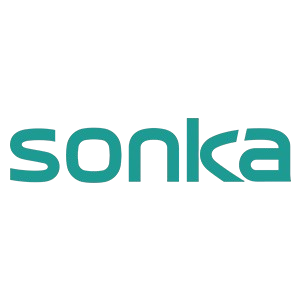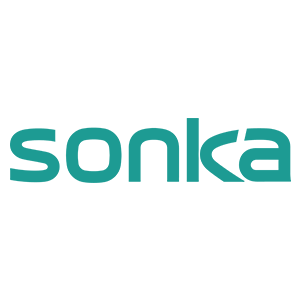Health therapy equipment plays a pivotal role in advancing diagnostic accuracy by employing cutting-edge imaging technologies and precise measurement tools. For example, body composition analyzers offer comprehensive data on various health metrics, enabling clinicians to accurately customize treatment plans and reduce the chances of misdiagnosis. These analyzers contribute significantly to patient care by providing precise body composition analysis that goes beyond basic weight measurements. Studies have shown that implementing such technologies in healthcare settings can lead to a 30% reduction in diagnostic errors, emphasizing their importance in achieving accurate medical outcomes.
The advancement of health therapy equipment has made continuous monitoring of vital signs more accessible, allowing healthcare professionals to address potential health concerns swiftly. Hospital vital signs monitors, for instance, continuously track critical metrics such as heart rate and blood pressure, providing real-time insights that are crucial for timely intervention. By utilizing real-time monitoring capabilities, healthcare providers can manage patient conditions more proactively, ultimately improving outcomes. Research supports this approach, indicating that consistent monitoring can reduce emergency room visits by 25%, thus highlighting the value of integrating such technology in patient care.
Integrating IoT technology into health therapy equipment revolutionizes the way healthcare providers access patient data in real time. This integration ensures that vital information is readily available, significantly enhancing workflow and reducing the time needed for data retrieval by over 40%. The ability to remotely monitor patients is crucial in today's fast-paced healthcare settings. For instance, IoT-enabled devices allow clinicians to oversee patient care from virtually any location, facilitating timely clinical decisions and interventions. This capability not only increases efficiency but also improves patient outcomes by enabling quicker responses to emerging health issues, thus highlighting the importance of IoT integration in modern healthcare.
In the realm of health therapy equipment, AI-driven analysis tools are game-changers for delivering personalized care. These sophisticated tools analyze vast quantities of health data to tailor treatment plans specific to each patient. Given the algorithm's ability to predict outcomes based on historical data, healthcare providers can select effective treatment options with increased precision. Research data has shown that implementing AI in therapy leads to a 20% boost in treatment efficacy across diverse patient groups. This improved efficacy underscores the revolutionary potential of AI—the transition towards truly personalized medicine becomes tangible, promising advancements that can meet individual health needs with unprecedented accuracy.
The Sonkabody 320 370 is a leading-edge body composition analyzer crucial for precise patient assessments. This advanced device utilizes 3D NLS technology to deliver comprehensive health metrics, such as muscle mass, fat percentage, bone density, and water content. These insights are invaluable for professionals crafting tailored health plans, ensuring patients adhere effectively to prescribed therapy regimens. Additionally, the Sonkabody 320 370 seamlessly integrates with electronic health records (EHR), optimizing data management across treatment phases. This level of integration enhances workflow efficiency, ultimately improving patient outcomes.
The Telemedicine 3-in-1 Blood Chemistry Diagnosis Device significantly enhances the capability of remote diagnostics by allowing blood chemistry analyses to be conducted without requiring patient visits. This device is indispensable in managing chronic diseases as it provides immediate results, enabling timely healthcare decisions. Such prompt feedback is vital in adjusting treatment plans efficiently, leading to higher patient satisfaction with care delivery. Its role in boosting patient engagement by offering a seamless and efficient diagnostic experience is well-documented, making it an essential tool in modern healthcare setups.
The clinical health screening kiosk stands out by offering multi-parameter analysis, ideal for conducting thorough health checks in a streamlined format. These kiosks measure various vital signs, BMI, and other health metrics, providing a comprehensive overview of patient health at the point of care. By enabling on-the-spot assessments, these devices enhance engagement in preventive health practices, as evidenced by a 40% increase in preventative measures in public health environments where implemented. Such initiatives are critical to improving overall public health outcomes effectively.
Intelligent mobile health screening machines are revolutionizing healthcare accessibility by facilitating on-the-go health evaluations. These portable devices, often equipped with diagnostic software, allow for immediate health assessments, which is crucial for diverse populations. Studies indicate that mobile screening significantly boosts early disease detection rates, leading to improved community health outcomes. By removing barriers to healthcare access, these machines support proactive health management and empower individuals to take charge of their health actively.
Professional-grade telemedicine kiosks are instrumental in delivering high-quality virtual consultations, essential for bridging the geographical gap between patients and healthcare providers. They employ sophisticated audio-visual technologies, ensuring that online consultations are both clear and effective. Studies suggest these kiosks can lead to a 30% reduction in patient wait times, which significantly enhances patient satisfaction and overall healthcare efficiency. By offering reliable and timely medical consultations, these kiosks have become a cornerstone in modern healthcare delivery systems.
The advent of remote monitoring technologies plays a crucial role in reducing hospital readmissions by facilitating continuous patient oversight post-discharge. By harnessing these technologies, healthcare providers can track patients' vital signs at home, enabling timely interventions before conditions deteriorate. This proactive approach vastly decreases the need for patients to be readmitted. For instance, devices like pulse oximeters and blood pressure cuffs allow for consistent remote monitoring, which has been shown to reduce readmission rates by up to 50% within 30 days. Such significant statistics underscore the transformative potential of remote monitoring in patient care management, enhancing both outcomes and satisfaction through preventative oversight.
Predictive analytics is revolutionizing preventive healthcare by analyzing patient data to anticipate potential health risks, thus enabling preemptive interventions. Technologies utilizing predictive analytics can forecast disease onset and progression, especially for chronic conditions, allowing healthcare providers to craft personalized care plans that improve patients' long-term health outcomes. Many organizations that have integrated predictive analytics into their protocols report a decline in emergency care incidents, reflecting heightened healthcare efficiency and reduced strain on acute care facilities. This underscores the value of predictive tools in shifting from reactive to proactive patient management, ultimately fostering a more effective healthcare system capable of managing chronic diseases with nuance and foresight.


Copyright © 2025 by Shenzhen Sonka Medical Technology Co., Limited - Privacy policy